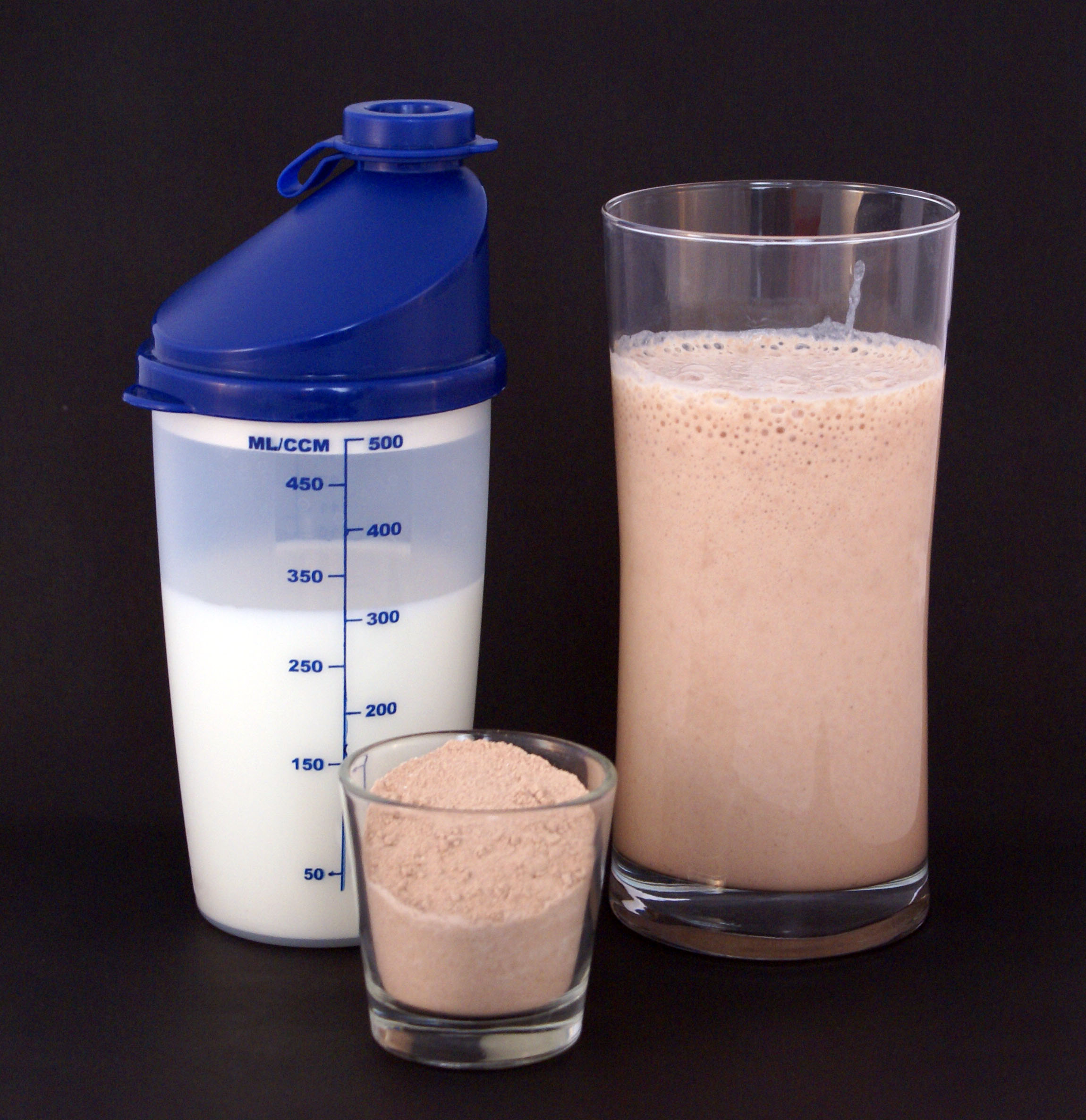
The 40s can often feel like a turning point, a decade where the body starts sending different signals than it did in your 20s and 30s. Metabolism might slow, recovery times extend, and those old routines that once worked like a charm suddenly don’t deliver the same results. This isn’t a sign to give up, but rather an invitation to listen more closely to your body and embrace a smarter, more targeted approach to health and fitness. It’s about shifting your focus from intensity for intensity’s sake to building a sustainable foundation of strength, mobility, and overall well-being that will serve you for decades to come.
Getting your body back into shape in your 40s might seem daunting, but with the right guidance and an expert-approved routine, it’s an entirely achievable goal. Our aim isn’t just about looking good, but feeling vibrant, energetic, and resilient. Consistency, as always, remains paramount, but it’s also about understanding the physiological shifts happening in your body and adapting your strategies to work with them, not against them. This article will break down key areas where small, consistent efforts can yield significant, lasting improvements.
We’ve gathered insights from leading fitness experts and dieticians to help you navigate this exciting phase of life. From optimizing your daily movement to making smarter nutritional choices and embracing recovery, these actionable strategies are designed to empower you. They emphasize proper form, body mechanics, and a holistic view of health, ensuring that your efforts are not only effective but also safe and sustainable. Let’s explore these essential habits that, once integrated, will have you feeling truly in great shape.

1. **Prioritize Consistent Movement & Warm-ups**
One of the simplest yet most profound shifts you can make in your 40s is to redefine your relationship with daily movement. Doctors often recommend walking as the foundational cornerstone of any health plan, and for good reason. It’s sustainable, highly effective, and offers a multitude of benefits, including supporting heart health, regulating blood sugar, improving circulation, and even clearing mental fog. Think of walking not just as exercise, but as a critical part of your daily routine, boosting your non-exercise activity thermogenesis (NEAT) and contributing significantly to your overall calorie burn.
Beyond just walking, integrating proper warm-up routines before any physical activity becomes increasingly crucial as we age. As Teddy Savage, national lead trainer at Planet Fitness, emphasizes, “As we age, it’s incredibly important to properly warm up before any type of physical activity.” This isn’t just a suggestion; it’s a necessity to prepare your body, prevent injury, and maximize your workout’s effectiveness. Dynamic movements are key here, designed to move your body through its fullest range of motion.
These dynamic warm-ups like arm circles, hip openers, and marching in place serve multiple vital functions. Arm circles, for instance, are essential for maintaining healthy shoulder mobility, which is critical for everyday movements like pressing objects overhead. Hip openers enhance efficient movement, reducing tightness and discomfort throughout your body. And marching in place gently elevates your heart rate, preparing your cardiovascular system to safely approach your target heart rate, thereby helping to burn the maximum number of calories during your routine. Incorporating these simple steps ensures your body is primed and ready, receiving optimal blood flow and joint lubrication.
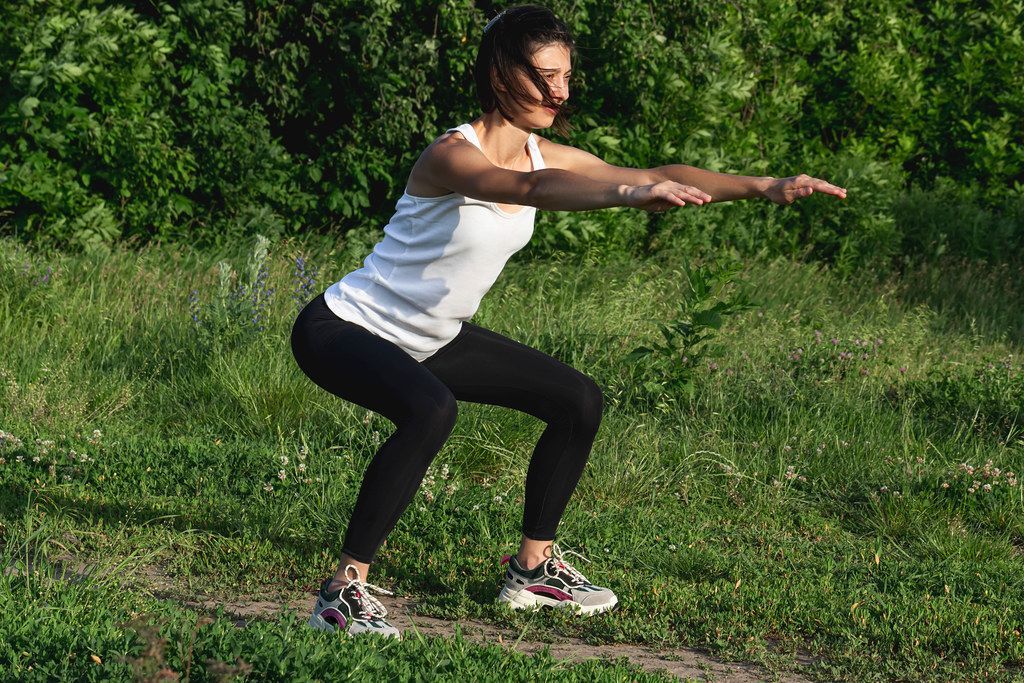
2. **Embrace Bodyweight Strength Training**
Strength training becomes a non-negotiable component of a healthy lifestyle in your 40s. It’s vital for improving balance, stability, muscular endurance, and coordination, all of which tend to decline with age. For those restarting their fitness journey or looking for a safe and effective entry point, bodyweight exercises are an absolute game-changer. As Teddy Savage rightly points out, “Focusing on body mechanics with bodyweight exercises is the best way to ease back into a strength training regimen.”
The beauty of bodyweight training lies in its accessibility and emphasis on foundational movement patterns. Without the immediate need for external weights, you’re empowered to truly concentrate on proper form and body mechanics. This focused approach is instrumental in ensuring safe, efficient muscle development, laying a solid groundwork for future progression, should you choose to add resistance. It’s about building strength from the inside out, mastering your own body before introducing additional challenges.
Savage highlights specific bodyweight movements that form the bedrock of overall physical progression. Exercises such as sit-to-stand squats, alternating lunges, modified pushups, and forearm planks are stellar examples. These movements aren’t just about building visible muscle; they’re about enhancing the essential “building blocks of movement.” This holistic approach increases stamina, develops proper movement patterns, and provides a customizable starting point that can be modified to harder versions as your strength and endurance naturally build.
Read more about: Hollywood Muscle: 15 Strongest Stars on the Big Screen

3. **Rethink Diet’s Role in Weight Management**
As you enter your 40s, a crucial paradigm shift in your approach to health and weight management often becomes necessary. The common belief that you can “out-exercise” a poor diet, which might have held true in your younger years, simply doesn’t apply anymore. Liz Blom, a registered dietician and wellness coach, succinctly puts it: “While some people may have no problem increasing their time at the gym, they do not always put the same time into their nutrition.” This highlights a fundamental truth: what you consume plays a far more significant role in weight regulation than exercise alone.
Consider the caloric reality: even a strenuous 30-minute cardio session might burn only a few hundred calories, an amount easily negated by a single indulgent meal or snack. As the context points out, “30 minutes of hardcore cardio is going to burn a few hundred calories, tops—not enough to make up for a single cheeseburger.” This isn’t to diminish the importance of physical activity, but rather to emphasize where your primary focus for weight loss should be. Studies even suggest that a physically active person isn’t necessarily less likely to gain weight than an inactive one, partly because exercise can stimulate appetite, potentially nullifying or even reversing weight-loss efforts.
Therefore, rather than solely relying on intense workouts, prioritize what’s on your plate. As the information suggests, “Sticking with a healthy diet is usually easier than sticking with an intense exercise regimen.” This means shifting your mindset from a guilt-driven exercise routine to a conscious and consistent effort in nutritional choices. Rethinking the connection between diet and exercise empowers you to make more effective changes, recognizing that a well-balanced, mindful diet is the most powerful tool for achieving and maintaining a healthy weight in your 40s and beyond.
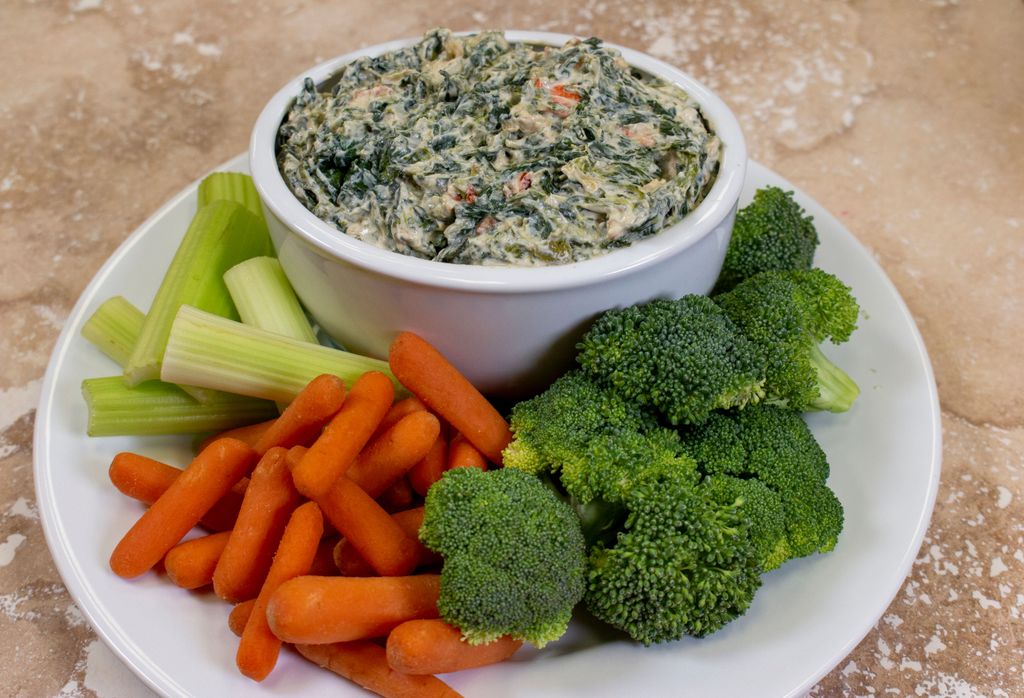
4. **Supercharge Your Fiber Intake**
If you’re looking for a simple yet incredibly effective dietary strategy to support weight management in your 40s, look no further than fiber. This often-overlooked nutrient plays a pivotal role in satiety and overall digestive health. Liz Blom, a registered dietician, explains that “High-fiber foods tend to be more filling than low-fiber foods, so you’re likely to eat less and stay satisfied longer.” This natural mechanism helps curb overeating and extends feelings of fullness, making it an invaluable ally in controlling your caloric intake without feeling deprived.
Beyond its satiating effects, fiber contributes to weight management in other meaningful ways. High-fiber foods typically take longer to eat, encouraging a more mindful and slower pace of consumption. Crucially, they are also “less energy-dense, which means they have fewer calories for the same volume of food.” This allows you to eat a more substantial amount of food, feeling truly satisfied, while consuming fewer calories overall. It’s a win-win strategy for managing hunger and maintaining a healthy weight.
To truly supercharge your fiber intake, aim for the recommended daily amounts: an average of 38 grams per day for men and 25 grams per day for women. Excellent sources readily available include a variety of plant-based foods such as beans, nuts, whole grains, and brown rice. Incorporating these into your daily meals—perhaps by swapping refined grains for whole grains, adding legumes to salads, or snacking on nuts—can significantly boost your fiber consumption, contributing to better weight management and a healthier gut, which is increasingly important as you age.
Read more about: Beyond the Fretboard: Unleashing Eddie Van Halen’s Epic Garage of Rocking Rides and Raw Power
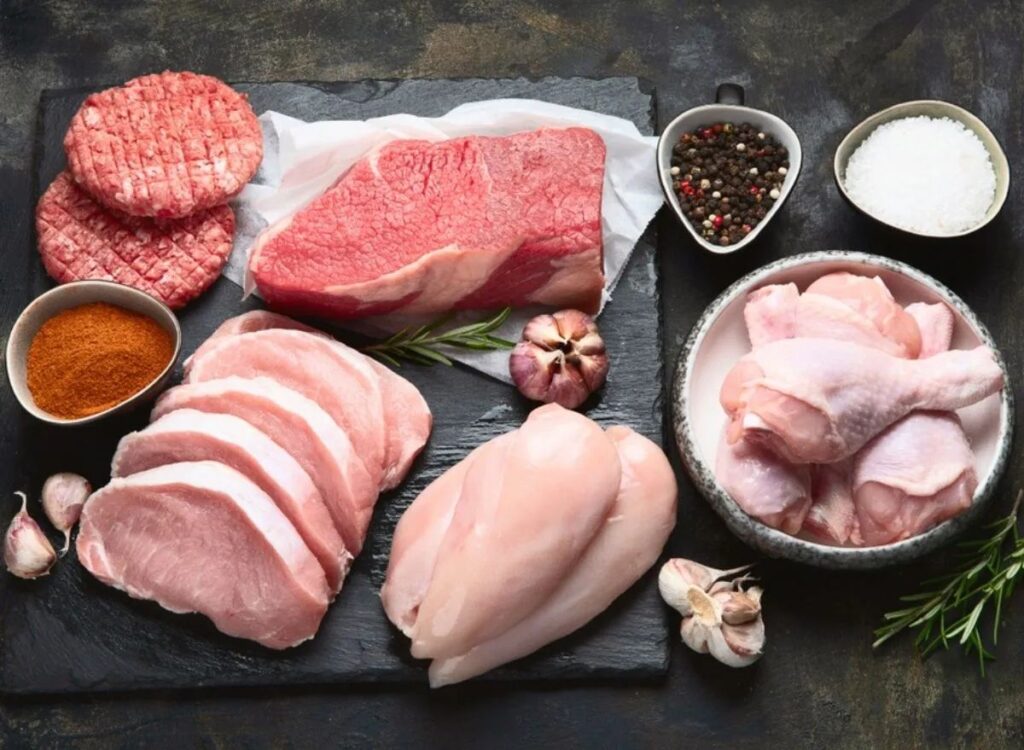
5. **Strategically Consume Protein**
One of the most significant physiological changes that accelerates in your 40s is the loss of muscle mass, a process known as sarcopenia, which begins around age 30 at a rate of about one percent per year. This isn’t merely an aesthetic concern; it profoundly impacts your metabolism. As Dr. Caroline Apovian, director of the Nutrition and Weight Management Center at Boston Medical Center, explains, “our basal metabolic rate is primarily determined by the amount of lean muscle mass we have.” When muscles shrink, metabolism slows down, meaning the average person may burn approximately 200 fewer calories per day at 45 compared to 25.
To counteract this metabolic slowdown and maintain a healthy weight, a strategic approach to protein consumption is absolutely essential. Protein stands out as the most satiating of the macronutrients, playing a critical role in helping you feel fuller for longer. This natural suppression of appetite significantly reduces the temptation for unhealthy between-meal snacks, making it easier to manage your overall caloric intake. Prioritizing protein means empowering your body to preserve precious muscle mass and keep your metabolic engine running efficiently.
But it’s not just about quantity; the *type* of protein matters. Experts recommend focusing on lean protein sources, such as turkey, chicken, salmon, and plant-based options. For those considering protein supplements, unsweetened whey and casein are particularly beneficial. Whey, rich in the amino acid leucine, actively stimulates protein synthesis, which is crucial for protecting and building lean muscle tissue, thereby maintaining an optimal basal metabolic rate. Casein, with its slower digestion, provides a steady release of amino acids, helping to keep blood sugar stable and prolonging feelings of fullness for several hours, making both excellent choices for strategic protein intake throughout the day.
Read more about: Beyond the Limelight: 14 A-List Celebrities Forging New Legacies as Tech and Business Investors
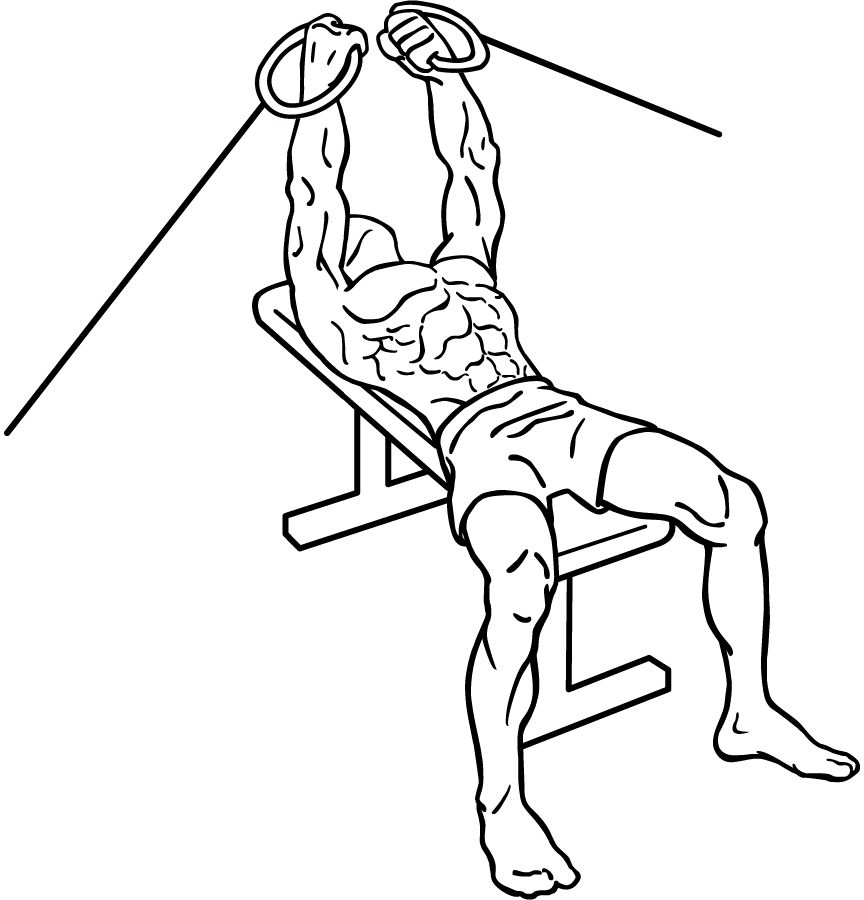
6. **Master Total-Body Strength Movements**
While strength training in general is vital, maximizing its weight-loss and body-sculpting benefits in your 40s involves a strategic focus on total-body movements. As Tyler Spraul, a Certified Strength and Conditioning Specialist, advises, “Squats and deadlifts will pay off much more than isolating muscle groups with curls and dumbbell raises.” These compound exercises engage multiple muscle groups simultaneously, leading to a far greater caloric expenditure during your workout compared to single-joint isolation exercises.
The efficacy of total-body movements extends beyond just immediate calorie burning. These powerful exercises are foundational for building functional strength, which translates directly into improved everyday movement and reduced risk of injury. Moreover, Spraul highlights that “full-body moves also help exercisers iron their own physical imbalances that naturally develop over time.” By working the body as a cohesive unit, you’re not only getting stronger but also creating a more balanced and resilient physique, addressing asymmetries that might otherwise lead to discomfort or strain.
As you gain confidence and proficiency in these techniques, gradually increasing the resistance, whether through added weights or more challenging bodyweight variations, can further amplify the benefits. Lifting heavy-ish, while always prioritizing proper form, leads to a significant “afterburn effect,” where your body continues to burn calories at an elevated rate even after your workout is complete. This post-exercise oxygen consumption (EPOC) makes total-body strength movements incredibly efficient for sustained fat loss and metabolic health, providing a powerful return on your exercise investment.
Read more about: Ditch the Gym: At-Home Workouts That Get Real, Measurable Results
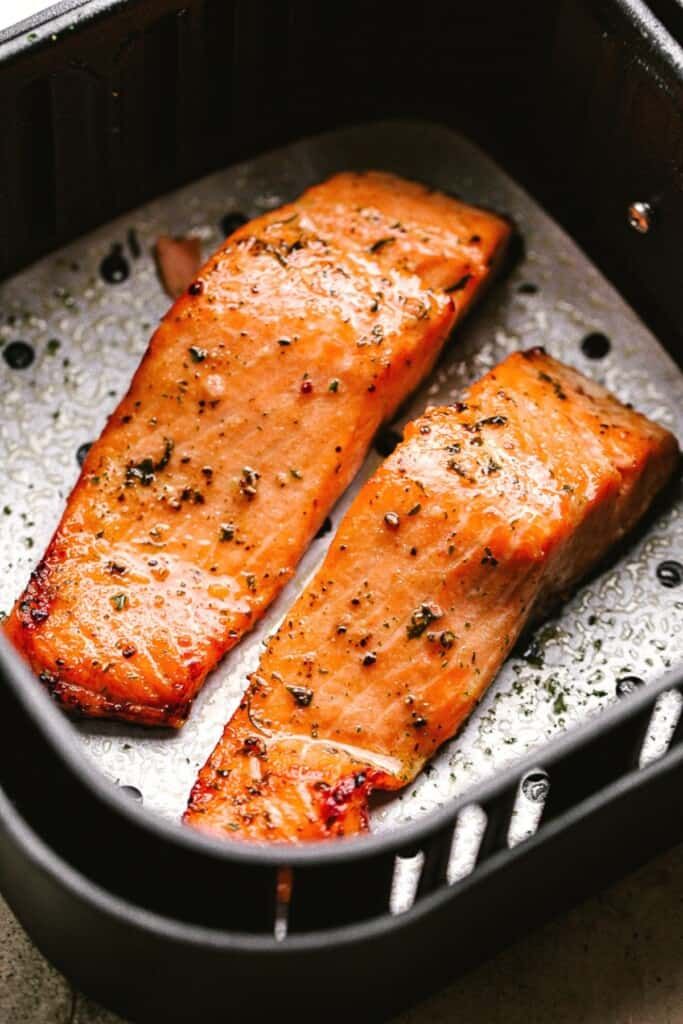
7. **Optimize Eating Habits (No Midnight Snacks/Portion Control)**
Fine-tuning your eating habits, particularly around meal timing and portion control, can yield remarkable results in your 40s. One crucial habit to reconsider is late-night snacking. Jamie Logie, a certified personal trainer and nutritionist, explains, “Cutting out those carbs later at night is really going to help [lose weight].” This is because the energy from unused carbohydrates is more likely to be stored as body fat when your metabolism naturally slows down in the evening hours, making it less likely for your body to burn them off.
To counteract this, Logie advises aiming to cease eating around 8 p.m. or, if you must eat, to stick exclusively to protein or non-starchy vegetables. These choices help to keep blood sugar levels stable, reducing the likelihood of fat storage. This simple adjustment respects your body’s natural circadian rhythms and metabolic shifts, empowering you to make choices that align with your weight management goals rather than inadvertently working against them.
Beyond timing, conscious portion control, especially when dining out, is another powerful strategy. Darius Russin, a board-certified physician and nutrition expert, suggests a practical hack: “As soon as your meal arrives, mentally (or even physically) cut it down the middle, and know you will be taking half home for lunch the next day.” This proactive approach immediately reduces your caloric intake for that meal, prevents overeating, and provides a convenient, healthy meal for the following day. It’s a discreet, effective way to manage portions without feeling deprived, ensuring you participate in the meal socially while maintaining your health commitments.
As you continue your journey into a healthier, more vibrant 40s and beyond, the next phase involves refining your approach with advanced dietary insights, specialized workout methodologies, and crucial lifestyle adjustments. These strategies build upon the foundations laid in the first section, empowering you to sustain vitality and longevity. It’s about being more attuned to your body’s evolving needs and making choices that optimize every aspect of your well-being.
This next set of practices focuses on fine-tuning your habits, ensuring that your efforts are not only effective in the short term but also contribute to lasting health outcomes. From managing the subtle impacts of sugar to optimizing your body’s recovery systems, these steps are designed to deepen your understanding and implementation of a truly holistic approach to health. Let’s dive into these crucial adjustments that will keep you feeling your absolute best.

8. **Manage Your Sugar Intake Wisely (and That Includes Fruit!)**
As you navigate your 40s, your body’s relationship with sugar often becomes more sensitive, making mindful management absolutely crucial for both weight and overall health. Ariane Hundt, a New York City-based nutrition coach, explains that “With estrogen and progesterone levels starting to fluctuate, we become more sensitive to sugar.” This heightened sensitivity means that when you consume carbohydrates, your blood sugar can soar more drastically than it used to, leading to faster fat storage and increased sugar sensitivity.
It’s not just added sugars that warrant attention; even natural sugars found in fruit can contribute to excess weight around the waistline as we age. Therefore, it’s wise to limit yourself to a small, controlled amount of fruit daily. Hundt specifically recommends no more than 20 grams of fructose a day for most individuals, emphasizing that it’s important to “Be very limited when it comes to starches, fruits and sugar as those increase insulin levels and with that fat storage.”
The impact of sugar extends beyond weight management, profoundly affecting skin health and the aging process. Sugary drinks, particularly soda, are significant culprits. Dr. Etti Ben-Zion, Sr. VP of Research and Product Development at Dr. Smood, highlights that “The biggest problem with soda is the crazy amount of sugar that causes an inflammatory reaction in the body, which causes pre-mature aging such as wrinkles and a saggy and dull texture.” Furthermore, the caffeine in soda can dehydrate the skin, exacerbating the appearance of fine lines and wrinkles. Consciously reducing sugar intake is a powerful step towards a healthier, leaner body and a more youthful glow.

9. **Stay Smartly Hydrated**
The importance of hydration in your 40s cannot be overstated, yet it’s not simply about drinking more water; it’s about drinking *quality* water. Many people assume all water is equal, but that’s far from the truth. As Dr. Ben-Zion points out, “Most tap water is highly polluted.” This makes the source and quality of your hydration a critical consideration for your overall health and detoxification processes.
To optimize your hydration, Dr. Ben-Zion suggests not just seeking out quality water but also enhancing it with natural infusions. She recommends infusing your water “with a pinch of Himalayan salt, lemon or decorate your water with Goji berries, raisins, cucumbers or herbs like parsley for additional health detoxification properties.” These additions can provide essential minerals and antioxidants, boosting the water’s health benefits and making hydration more enjoyable.
Proper hydration is fundamental to metabolic function, energy levels, and nutrient transport, all of which become increasingly vital as your body ages. Good hydration supports every cellular process, aids in waste removal, and can even impact skin elasticity and appearance, contributing to that desired youthful glow. Making smart choices about your water intake is a simple yet profoundly effective way to support your body’s complex systems and maintain peak performance.
Read more about: From Everyday to Elevated: 15 Smart Style Swaps to Instantly Transform Your Look and Boost Your Confidence
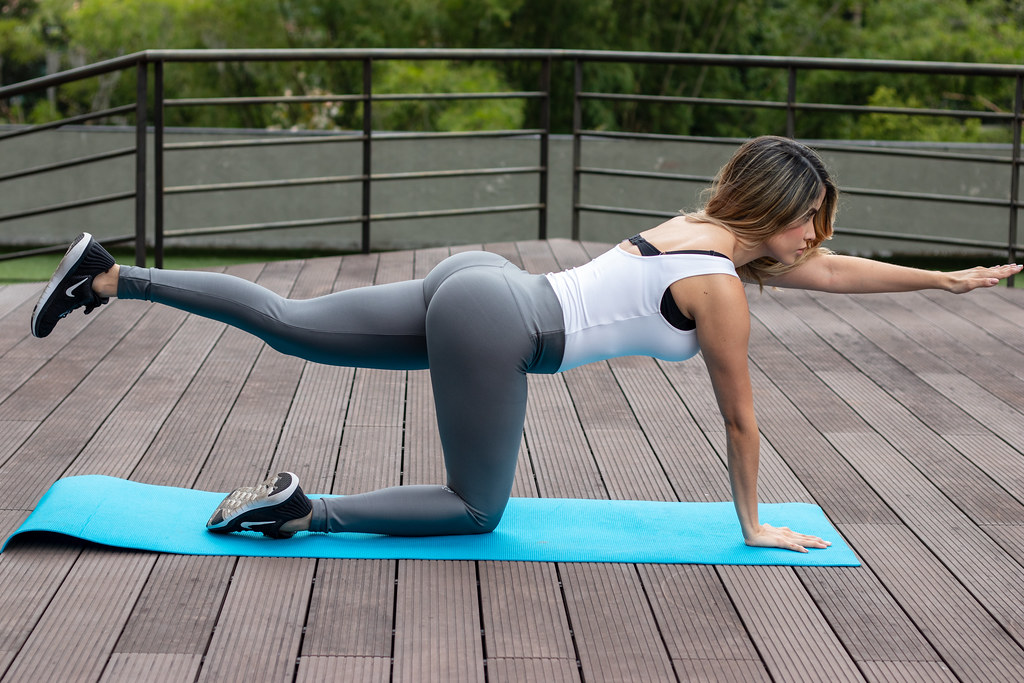
10. **Embrace Lower-Intensity Workouts and Boost Mobility**
In your 40s, the drive for intense, high-impact workouts might not always be the most beneficial path. Instead, incorporating lower-intensity workouts and prioritizing mobility can yield significant fitness gains while mitigating stress on your body. Ariane Hundt, a nutrition and fitness expert, suggests that activities like yoga are excellent for maximizing fitness goals without the cortisol-spiking stress response often triggered by more strenuous routines.
Yoga, with its focus on flexibility, strength, and balance, is particularly well-suited for improving overall mobility. It allows your body to move through its full range of motion, alleviating stiffness and discomfort that can accumulate with age. Similarly, swimming stands out as another fantastic lower-intensity exercise. Hundt recommends it as an alternative to higher-impact activities, noting its ability to deliver a great workout while limiting stress-related cortisol spikes, making it gentle on joints and the cardiovascular system.
Beyond traditional exercises, embracing activities like aerobic dance can be incredibly effective and enjoyable. Research from Fukuoka University indicates that aerobic dance can reduce body mass in middle-aged women with mild obesity, all while offering a low-impact and low-injury workout. Furthermore, dedicated stretching routines, as highlighted by research in the Journal of Athletic Training, significantly reduce muscle soreness and injury risk. These mobility-focused practices are essential for developing a more resilient and functional physique, ensuring your fitness journey is sustainable for years to come.

11. **Prioritize Quality Sleep**
While diet and exercise often take center stage in health discussions, prioritizing quality sleep in your 40s is equally, if not more, critical for your overall well-being and weight management. The American Journal of Epidemiology has published research linking short sleep duration with both weight gain and an increased likelihood of obesity. This underscores that sleep isn’t just about rest; it’s a powerful component of your metabolic and hormonal health.
Adequate sleep plays an indispensable role in a multitude of physiological processes, including hormonal regulation, muscle repair, and cognitive function. As you age, your body’s natural recovery mechanisms can become less efficient, making sufficient sleep a non-negotiable. It helps regulate hormones that control appetite, such as ghrelin and leptin, thereby influencing your food choices and propensity for unhealthy cravings.
Think of sleep as the essential recovery period where your body rebuilds, repairs, and recharges. Just as you wouldn’t skip a crucial workout or a healthy meal, you shouldn’t skimp on snoozing if you’re dreaming of a leaner, healthier body and sustained vitality. Making sleep a top priority ensures that all your other health efforts are supported, allowing your body to perform and recover optimally day after day.
Read more about: The 11 Most Blatant Failures: Unmasking ‘As Seen on TV’ and Detailing Products That Crumbled Under Scrutiny
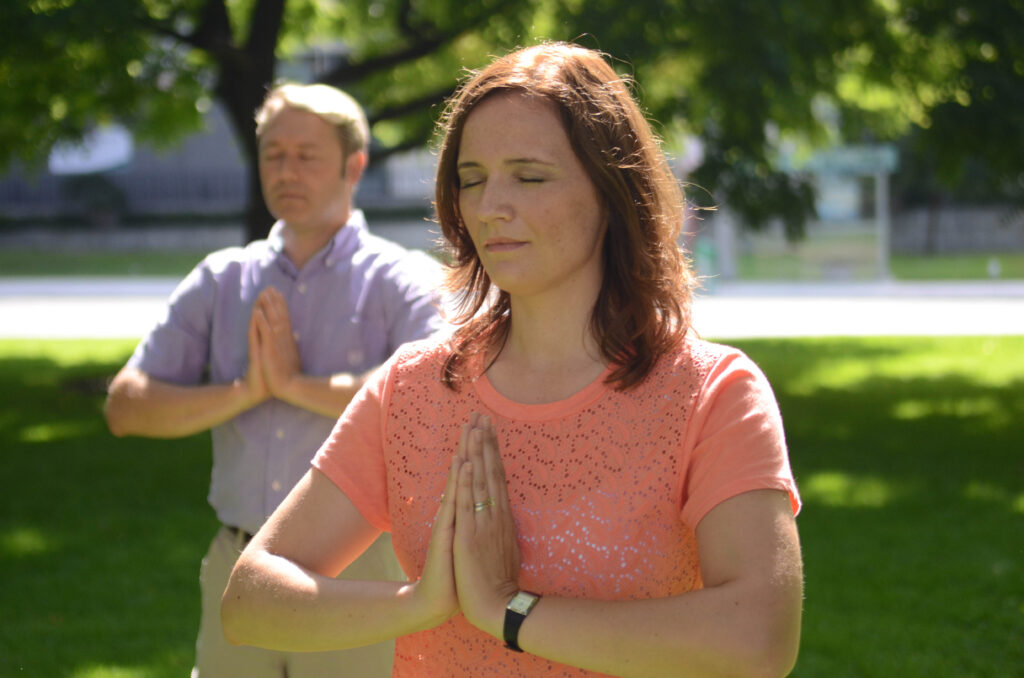
12. **Cultivate Focus and Consistency in Your Workouts**
To truly maximize the effectiveness of your workouts in your 40s, it’s not always about dialing up the intensity, but rather, about dialing in your focus. Glenn Dickstein, Founder and CEO of NeighborhoodTrainer, succinctly advises, “Put down the phone and focus. If you only have 30 minutes, focus on getting an intense and efficient workout. There are 23.5 other hours to be distracted.” This mental engagement ensures that every minute you dedicate to exercise is productive and purposeful.
Beyond focus, consistency stands as the ultimate key to achieving and maintaining results as you age. Life in your 40s often comes with packed schedules, making it tempting to skip a gym day here and there. However, Dickstein emphasizes, “The biggest tip I can give is to be consistent. Create a program that fits your busy professional and family schedule.” Even if it means consistently exercising for just 20-30 minutes, those regular efforts will yield far greater benefits than sporadic, intense sessions.
Consistently showing up, even for shorter, focused workouts, builds a cumulative effect that profoundly impacts your strength, endurance, and overall well-being. These regular efforts condition your body over time, making it more resilient and better prepared for those days when you do have more time or energy to push yourself further. By committing to focused and consistent movement, you’re investing in long-term health and ensuring your body remains conditioned to take advantage of every opportunity to be active.
Read more about: Melissa McCarthy’s Enduring Confidence: Unpacking Her 10-Year Journey of Health, Hollywood Defiance, and Self-Acceptance

13. **Fuel Your Body for Optimal Performance**
In your 40s, your nutritional strategy must evolve beyond simply cutting calories; it needs to focus on fueling your body for performance, recovery, and sustained energy. Personal trainer Casey Dellas offers a valuable guideline: “A good basic guideline for every meal would be to focus on one to two fist-sized portions of lean protein and two fist-sized portions of green vegetables.” He also advises incorporating healthy carbohydrates for an extra boost of energy both before and after intense training sessions, ensuring your body has the necessary fuel to perform and rebuild.
To combat the metabolic dips that often accompany middle age, adopting a pattern of eating smaller, more regular meals throughout the day can be highly effective. Ariane Hundt suggests “An ideal diet consists of four or five smaller meals throughout the day, lots of green salads with lean proteins, and a little good fat from olive oil and avocado.” This approach helps keep your metabolism steady and prevents extreme hunger that can lead to overeating or poor food choices.
Protein remains a cornerstone of this performance-focused diet, not just in quantity but in consistent intake. Hundt highlights that “Protein is a thermogenic food as about 30 calories of 100 calories consumed will be burned off simply through the digestive process, so eating it every 4 hours or so allows us to feel full and balanced.” Complementing this, smart fat intake is equally crucial. Hundt recommends that “Fat intake needs to be monitored as well and should mostly come from avocado, olive oil and the anti-inflammatory omega-3 fatty acids,” providing essential nutrients that support cellular health and reduce inflammation.
Read more about: I’m a Race Driver: 7 Apex Machines Pushing the Limits of Speed and Engineering

14. **Integrate Stress Reduction Techniques for Holistic Health**
The challenges of your 40s can often bring increased stress, which can directly impact your physical health, weight, and overall well-being. Therefore, integrating intentional stress reduction techniques becomes as vital as your exercise and diet. Ariane Hundt emphasizes that “Meditation and other R&R activities are now much more important [in your 40s] than ever before as they help reduce stress, boost mental focus and lower stress hormones.” These practices provide crucial mental and emotional respite.
Even your workout choices can contribute to or alleviate stress. Hundt cautions against “long, drawn-out cardio sessions, such as long runs and very intense and stressful workouts, such as spinning, sprinting and long HIIT workouts” because they “can make our bodies more stressed out and promote high cortisol levels, which boosts fat storage around the midsection.” This highlights the importance of choosing exercise modalities that support, rather than detract from, your body’s stress response.
To effectively manage stress through physical activity, consider modifying your post-workout routine. Hundt proposes an “ideal workout consists of a 20-30-minute lifting session, followed by a long, relaxed walk afterwards.” This strategic pairing allows the lifting session to boost adrenaline and cortisol in the short term, while the subsequent relaxed walk helps to reduce those stress effects, promoting recovery and encouraging body fat to be burned off. By thoughtfully incorporating these stress-reducing practices, you foster a more balanced internal environment, leading to greater physical and mental health.
Read more about: Beyond Steel and Silicon: How Revolutionary Materials Like Bamboo Are Redefining the Automotive Future
Embracing these seven additional strategies in your 40s is about creating a truly holistic approach to health that addresses both the physical and the often-overlooked mental and emotional aspects of well-being. From mindful eating and intelligent hydration to diverse workouts and crucial stress reduction, each step contributes to a leaner, fitter, and more energetic you. Remember, the goal is not merely to get through your 40s, but to thrive in them, building a foundation for sustained health, vitality, and longevity that will serve you wonderfully in the decades ahead.



